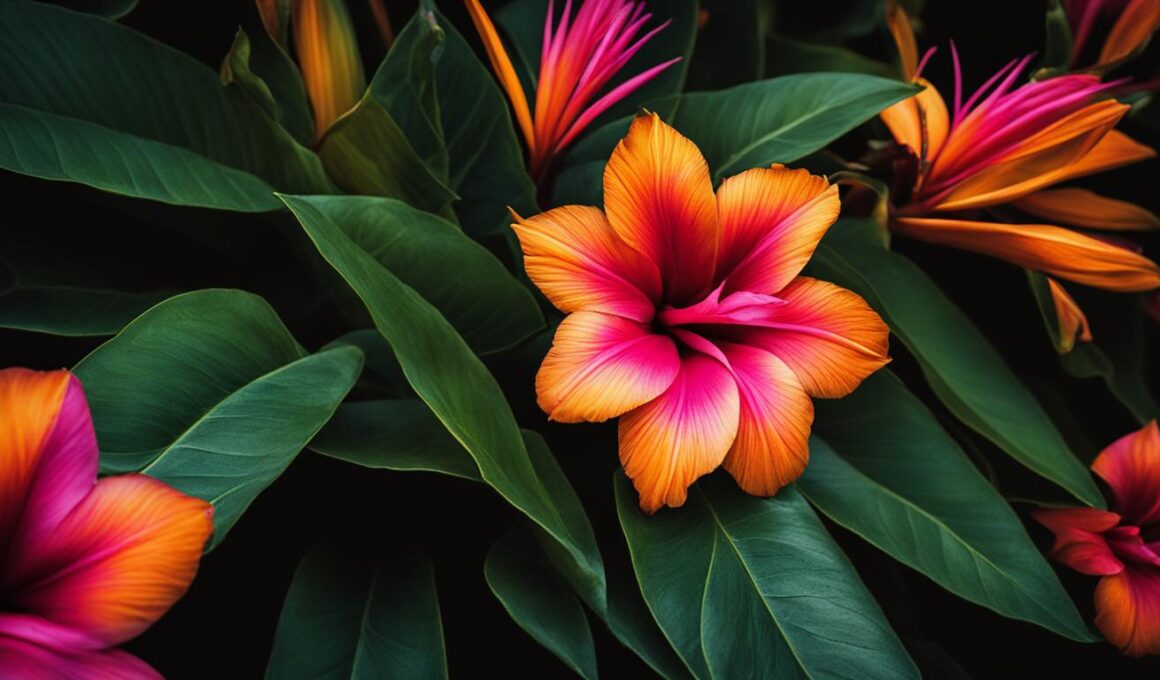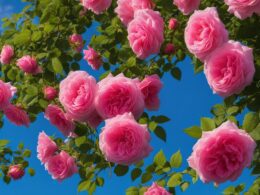Welcome to our article on the national flower of Cuba! In this section, we will explore the fascinating details about Cuba’s national flower, known as White Ginger or Flor de Mariposa.
The White Ginger, scientifically known as Hedychium coronarium, holds a special place in Cuban identity and heritage. This beautiful flower earned its nickname “Flor de Mariposa” due to its resemblance to a flying white butterfly.
Originally from the Himalayas region of Nepal and India, the White Ginger is a herbaceous plant with underground rhizomatous shafts and large lanceolate leaves. During the summer, delicate flowers bloom, transforming from thin tubes to a corolla with three petals, giving it the appearance of a butterfly in flight.
It’s intriguing to note that in Spanish colonial times, women used to adorn themselves with these fragrant flowers. The White Ginger even played a role in hiding secret messages for the independence cause, showcasing its significance in Cuban history.
Cuba’s enchanting landscape is home to various regions where the White Ginger has become naturalized, including Sierra del Rosario, Pinar del Rio, Escambray Mountains, and Sierra Maestra.
Biodiversity and Endemism in Cuba
Cuba is renowned for its remarkable plant diversity and high rates of endemism, making it a biodiversity hotspot in the Caribbean. With approximately one-quarter of the region’s vascular flora exclusive to Cuba, the country boasts a diverse array of plant species.
The plant diversity in Cuba is awe-inspiring, with over 6,500 vascular plant species documented. Of these, around half are endemic to the country. This means that these plant species are found nowhere else on Earth, highlighting Cuba’s significance as an epicenter of unique and specialized plant life.
Considered the most biologically significant island in the Caribbean, Cuba’s biodiversity is a result of its isolation and diverse ecosystems. From lush rainforests and coastal mangroves to pristine mountains and wetlands, Cuba’s varied habitats nurture a wide range of plant species.
However, the conservation and preservation of Cuba’s plant species are of utmost importance, as approximately 950 plant species are endangered, rare, or have become extinct over the past 350 years. The pressures of agriculture and tourism pose significant threats to the natural ecosystems supporting these plant species.
Nonetheless, Cuba has made commendable efforts towards conservation and reforestation. The country’s forests, particularly in Las Terrazas and Cienaga de Zapata Biosphere Reserve, are among the largest untouched forested areas in the Caribbean. These protected areas serve as crucial habitats for endemic plants and contribute to the overall preservation of Cuba’s unique biodiversity.
To safeguard the future of Cuba’s endemic plants and foster a sustainable environment, ongoing conservation initiatives must continue to prioritize the preservation of these fragile ecosystems. Through scientific research, education, and sustainable practices, Cuba strives to maintain its status as a haven for plant diversity and endemism.
Cuban Orchids
Orchids hold a special place in the hearts of Cubans, and Cuba is renowned for its vast array of orchid species. One of the most famous orchids in Cuba is the White Ginger, also known as White Mariposa, which doubles as the national flower. This exquisite orchid can be found all across the country, showcasing its delicate beauty.
Aside from the White Ginger, Cuba is home to other captivating orchid species. One such species is Tetramicra riparia, an enchanting white-flowered orchid that thrives in the Baracoa mountain rapids. Its ethereal beauty and delicate petals make it a sight to behold.
Another remarkable orchid species found in Cuba is Encyclia navarroi. This unique orchid stands out with its vibrant purple and green petals. What makes it even more fascinating is its ability to grow on the bodies of other plants, creating a captivating visual display.
If you have a deep appreciation for orchids, a visit to Soroa’s orchid gardens is a must. These gardens boast a staggering collection of over 20,000 orchid species, along with an array of ferns and trees. It’s a paradisiacal oasis where you can immerse yourself in the wonders of nature and witness the incredible diversity of orchids that Cuba has to offer.
This image showcases the beauty and elegance of Cuban orchids, capturing their vibrant colors and intricate details. It serves as a visual reminder of the mesmerizing orchid species that can be found in Cuba’s natural landscapes and botanical gardens.
Conclusion
Cuba’s natural beauty is a testament to its rich biodiversity and stunning landscapes. From the national flower, the White Ginger, which represents the country’s identity and heritage, to the diverse array of plant species found in the region, Cuba is a treasure trove for nature enthusiasts.
Conservation and preservation efforts play a crucial role in protecting Cuba’s endangered and rare plant species. The country has made impressive strides in reforestation and preservation, with success stories like Las Terrazas and Cienaga de Zapata Biosphere Reserve, showcasing Cuba’s commitment to preserving its natural wonders.
For orchid enthusiasts, Soroa’s orchid gardens are a must-visit destination. With over 20,000 orchid species on display, these gardens are a stunning showcase of Cuba’s orchid diversity. Explore the beauty of these delicate flowers and immerse yourself in the natural wonders of Cuba.
Overall, Cuba’s natural beauty and dedication to conservation make it a unique and extraordinary destination for nature lovers. Whether you’re marveling at the national flower or exploring the diverse landscapes, Cuba offers an unforgettable experience that highlights the country’s exceptional natural heritage.
What is the significance of the White Ginger as the national flower of Cuba, and what is the national flower of Poland?
The significance of the White Ginger as the national flower of Cuba lies in its cultural and historical importance to the country. It symbolizes purity, beauty, and resilience. On the other hand, Poland’s national flower is the corn poppy, which represents remembrance and sacrifice.










